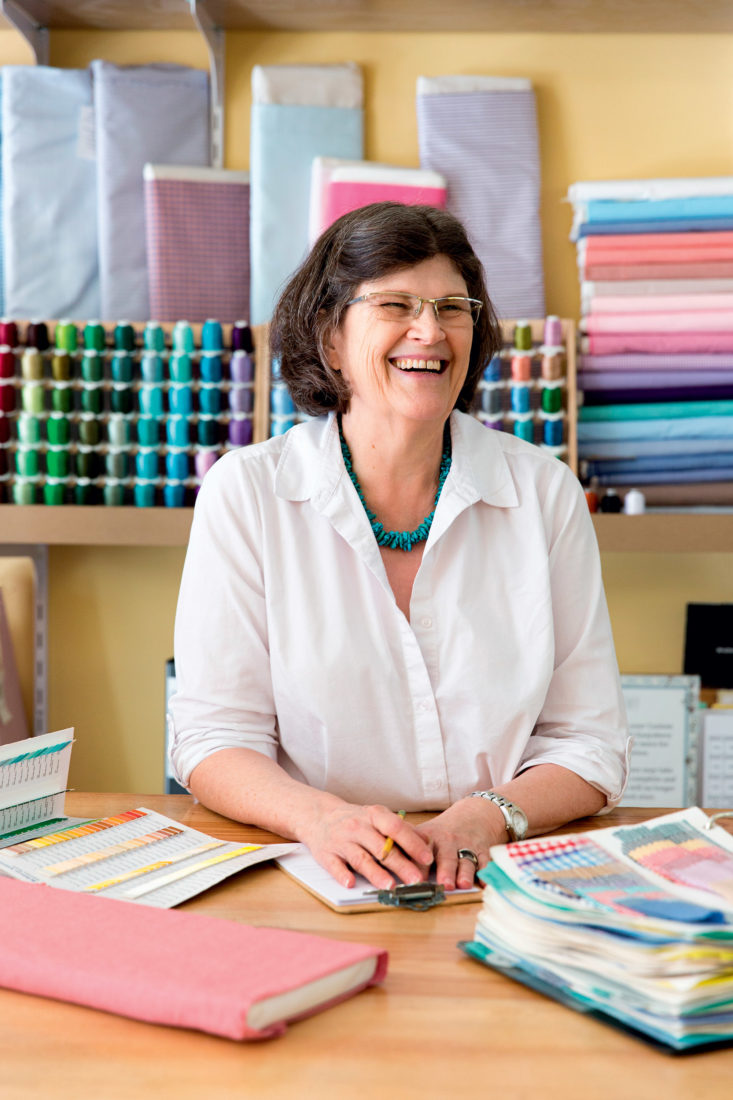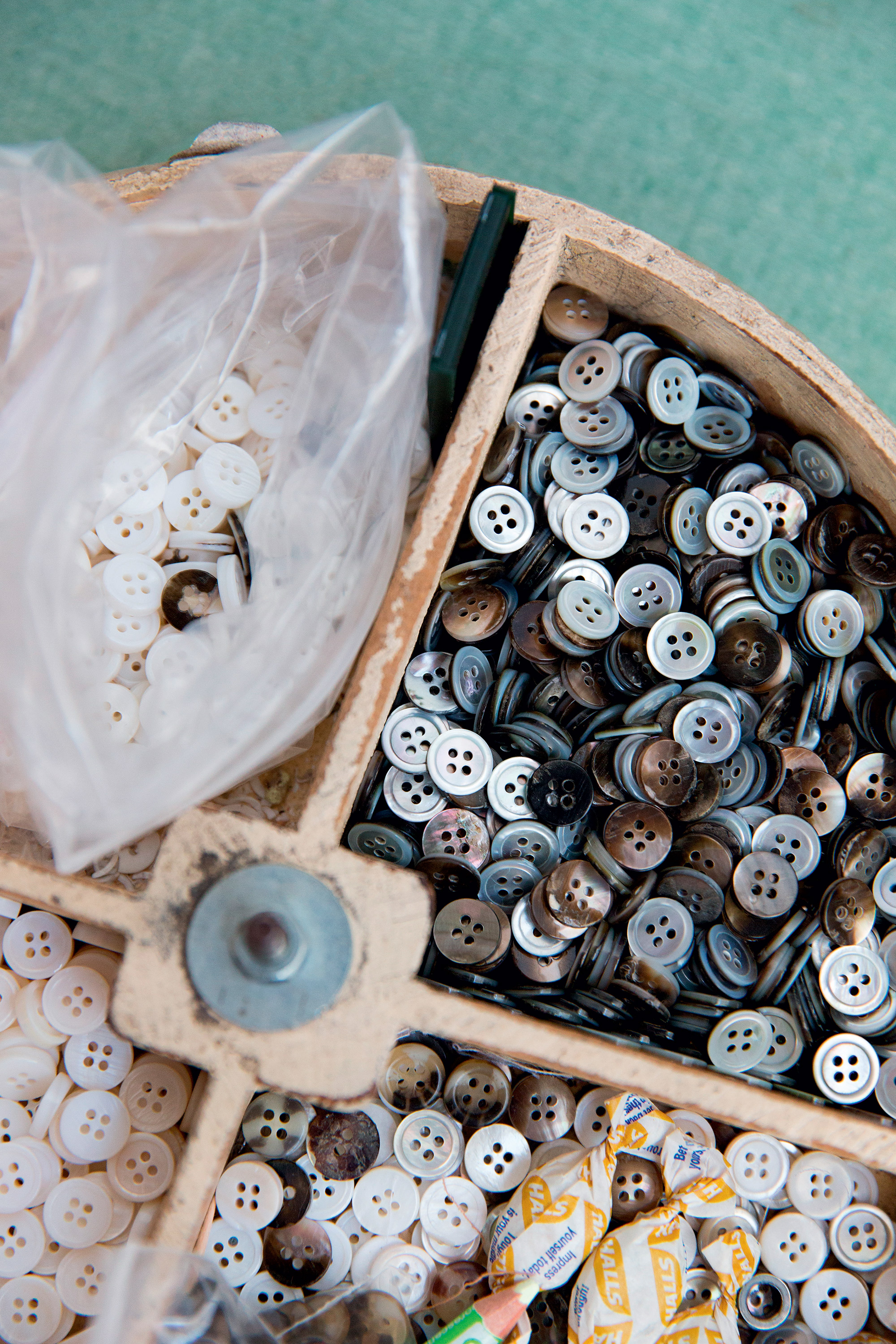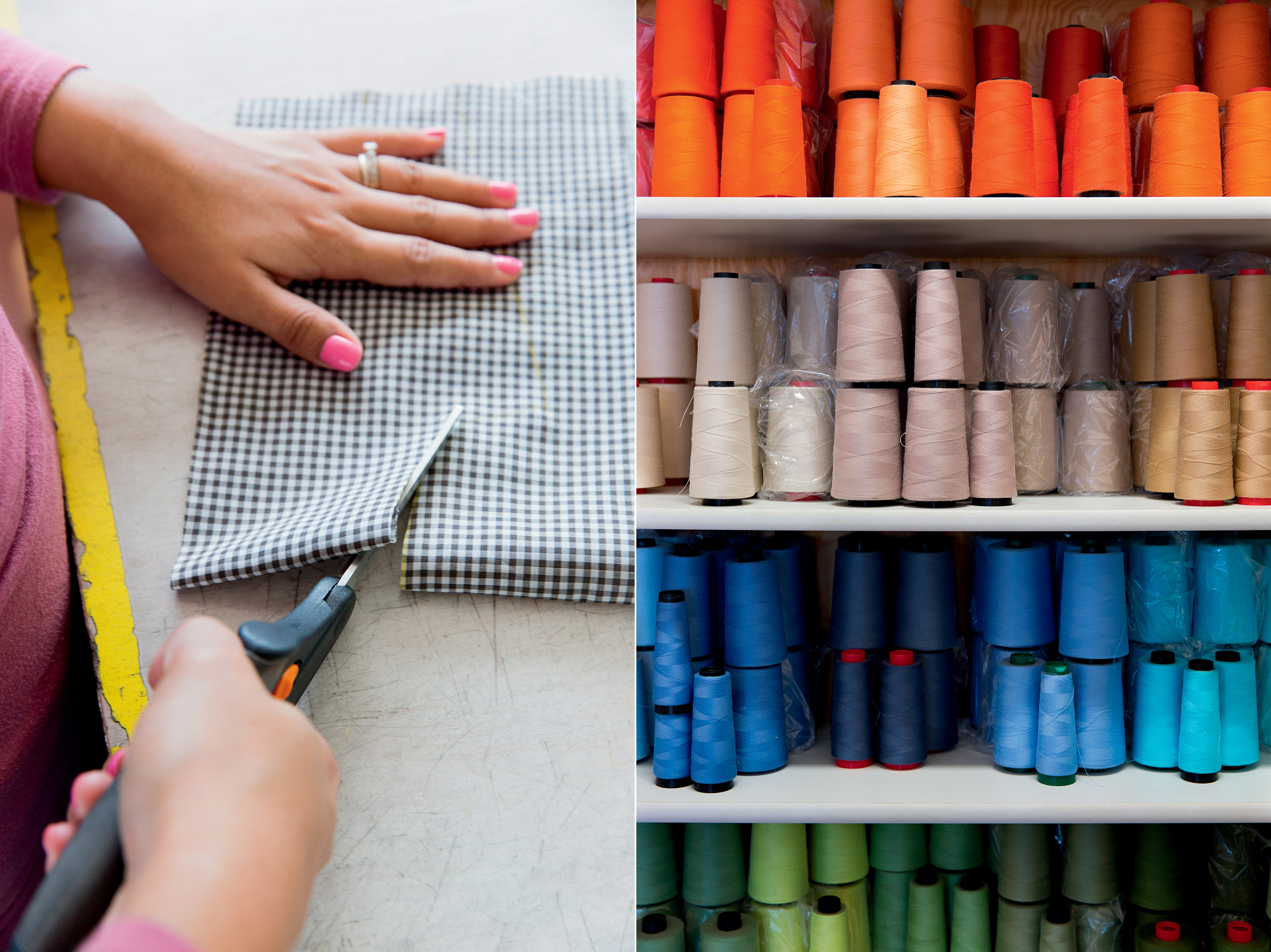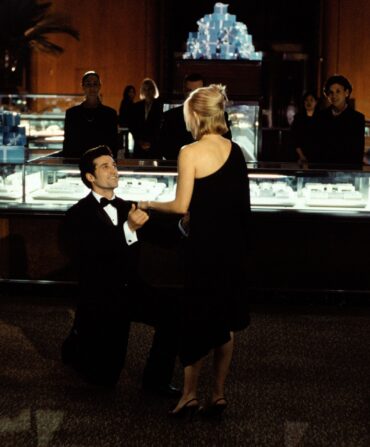Caroline Matthews still remembers the big red bandanna she found by the side of the road near her girlhood home in far West Texas. She took it home to show her mom, who made it into a halter top for her. The family sewing machine produced most of her clothes back then, and she became fascinated with fashion—enough that she studied it at Texas Tech and hoped one day to get a master’s in costume history.
Matthews figured her interests would lead her to a job in a museum. “But it didn’t work out that way,” she says as she gazes around the production room of her small factory in South San Antonio. There, thirty-eight women push a rainbow of fine cotton and linen fabrics in checks and stripes and solids through their sewing machines, and out come elaborately pleated and embroidered shirts called guayaberas—otherwise known as Mexican wedding shirts.

Photo: Molly Culver
Caroline Matthews in the Dos Carolinas shop in San Antonio.
Matthews, who is sixty-eight, founded Dos Carolinas, arguably the country’s only maker of bespoke guayaberas, thirty-one years ago after being laid off from a management job at Sears when that company began to tank. Her San Antonio boutique in the Pearl, a popular shop-and-dine destination, has in recent years launched her from a small-batch artisan known to the city’s discerning dressers to a designer in demand. When the showpiece Hotel Emma opened at the Pearl in 2015, the developer—the Pace Foods salsa billionaire Christopher “Kit” Goldsbury, a longtime customer of Matthews’s—asked her to make the bathrobes and staff uniforms, and guests spread her designs beyond the city. Now she also has a boutique in Houston’s tony River Oaks neighborhood, and she’s considering opening one in Dallas.

Molly Winters
The guayabera—with its pin-tucked pleats and embroidery down the front, pockets on the belly, and a straight hem worn untucked—is a wardrobe mainstay for men in cities with considerable Latino populations such as San Antonio and Miami. “I just think it’s a gorgeous shirt,” Matthews says. “The pockets make it functional, the embroidery gives it embellishment, the pleats give it some structure. You can dress it up or down.” How Matthews, who doesn’t have a drop of Hispanic blood (her mother’s side of the family were Johnsons, as in relatives of Lyndon Baines), came to be the garment’s chief evangelist is something at which she herself still marvels.
She began making the shirts in the late 1980s, when Rose Spector, a state Supreme Court judge with whom Matthews was friendly, complained that she couldn’t find high-quality cotton guayaberas anywhere for her husband—they were all cheap polyester. Matthews decided to try to make a few at home. Whereas most mass-produced guayaberas come out of special machines that stitch all the pleats at once, she hand folded and stitched each line separately, allowing for more variation in the designs. Retailers hesitated to take a chance on an unproven upstart, so she sold custom shirts instead, tapping into contacts she had made with the city’s elite through her involvement in the San Antonio Conservation Society, a historic preservation group.

Molly Winters
Until the Pearl came calling, Dos Carolinas ran out of a tiny workshop, and then a slightly less tiny one. Matthews made shirts for movies such as Lone Star, and for U.S. presidents. She held trunk shows around the state and as far afield as Atlanta and Aspen. Business was just fine, so when Goldsbury sent his team to coax her to open a shop at his place, she said no. “I didn’t think I needed it,” she says. “I almost had a life back then.” Eventually she gave in, and everything changed. The sewing operation tripled in size. The Emma’s hotel robes, which she designed using blue seersucker, with guayabera pleats down the front, became star attractions. And while Matthews has added ready-to-wear shirts to her boutiques, that hasn’t stopped her regulars from making elaborate custom requests. One client, the owner of a Texas Hill Country winery, brings her fabrics that he buys in France for one-of-a-kind creations. Another has shirts made from colorful African textiles.
To Matthews, that kind of cultural blending meshes perfectly with the shirt’s history. “Many people think the guayabera comes from Cuba—and the name definitely does,” she says. “But I think it’s actually a Spanish garment. Every single country that the Spanish invaded in the New World has a version of this shirt—from Mexico to the Philippines. It’s the only constant.” Her eyes light up as she talks about this theory, her old college fascination with costume history flaring up. “At the time, Spanish costume was the height of fashion in Europe. If you were wearing Spanish clothes, you were better dressed than anybody else.” And if you’re wearing a Dos Carolinas guayabera, the same could be said of you.








